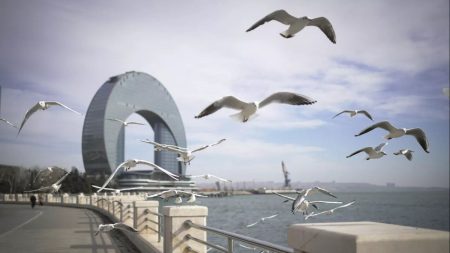Destinations around the world are facing the negative consequences of overtourism, with overcrowded streets, environmental degradation, and cultural disruption becoming more prevalent. One aspect of overtourism that is receiving attention is the impact of cruise ships on these destinations. These massive vessels bring millions of passengers each year, contributing to pollution, congestion, and strain on local infrastructure. In response, some popular tourist destinations are taking measures to limit the number of cruise ships allowed to dock in their ports.
One major concern with cruise ships is the toxic emissions they release into the air and water. These emissions can have detrimental effects on the environment and public health, contributing to air pollution and ocean acidification. In an effort to reduce these harmful impacts, destinations such as Venice, Santorini, and Dubrovnik have implemented restrictions on cruise ships, limiting the number of ships allowed to dock or reducing the size of ships that can access their ports. By doing so, these destinations hope to mitigate the environmental damage caused by these vessels and create a more sustainable tourism model.
In addition to environmental concerns, the influx of cruise ship passengers can overwhelm local communities and infrastructure. Overtourism has been a growing issue in many popular destinations, leading to overcrowded streets, increased litter, and strain on public services. By limiting the number of cruise ships allowed to dock, destinations can better manage the flow of tourists and ensure a more positive experience for both visitors and residents. This shift towards more sustainable tourism practices is essential in preserving the beauty and cultural heritage of these destinations for future generations.
The rise of overtourism has sparked a global conversation about the impact of mass tourism on local communities and ecosystems. Destinations are realizing the need to balance the economic benefits of tourism with the need for responsible and sustainable practices. By taking a stand against cruise ships and implementing restrictions on their access, these destinations are sending a clear message that they prioritize the well-being of their environment and residents over mass tourism. This shift towards more sustainable tourism practices is essential in preserving the beauty and cultural heritage of these destinations for future generations.
While limiting the number of cruise ships allowed to dock may result in short-term economic losses for some destinations, the long-term benefits of reducing overtourism and preserving the environment far outweigh the costs. By prioritizing the well-being of their communities and natural resources, these destinations are setting a positive example for other tourist hotspots facing similar challenges. As the conversation around overtourism continues to evolve, it is clear that sustainable tourism practices are crucial in ensuring the long-term viability of these destinations and protecting them for future generations to enjoy.
In conclusion, the efforts of destinations to restrict cruise ships and combat overtourism are a step in the right direction towards creating a more sustainable and responsible tourism industry. By prioritizing the well-being of their environment, communities, and cultural heritage, these destinations are taking a stand against the negative impacts of mass tourism and setting a positive example for others to follow. While there may be challenges and economic implications in the short term, the long-term benefits of preserving these destinations for future generations far outweigh the costs. It is through these bold and proactive measures that destinations can ensure a more sustainable and enriching travel experience for all.








